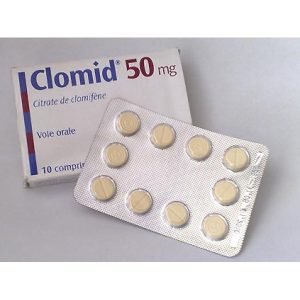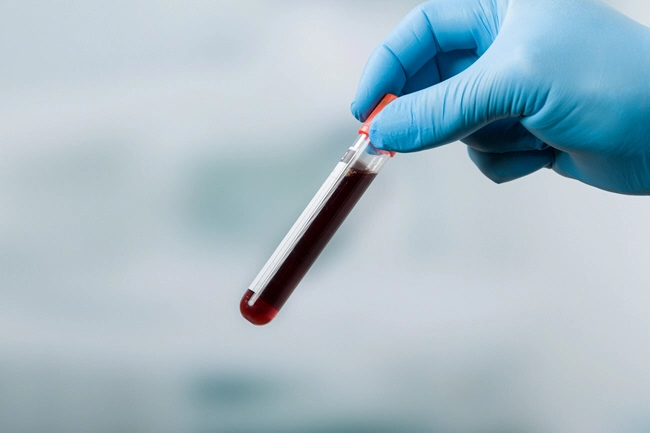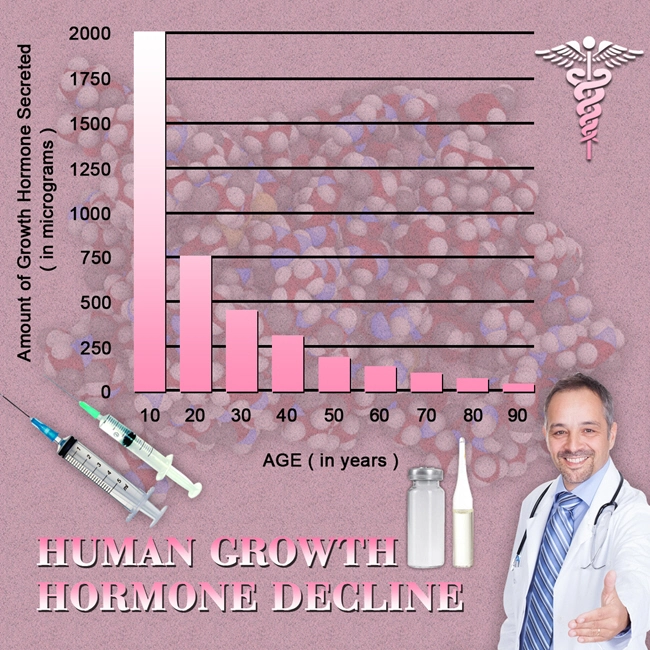
 Clomiphene (also known as Clomid) was first used in the 1960s for women suffering from abnormal ovulation. Later, it was approved for women who were unable to ovulate. In 1989, clomiphene was discovered to ascertain fertility in females.
Clomiphene (also known as Clomid) was first used in the 1960s for women suffering from abnormal ovulation. Later, it was approved for women who were unable to ovulate. In 1989, clomiphene was discovered to ascertain fertility in females.
How? Women who were capable of pregnancy would gain bone mineral density while using the drug. Women who were unable to conceive and bear children did not experience the same increase in bone mineral density.
Video Link: https://vimeo.com/288019232
Video Download: Click Here To Download Video
Video Stream: Click Here To Stream Video
But Clomiphene Does Not Just Help Women
Incredibly, clomiphene has proven to be helpful to men that are suffering from low levels of testosterone (“Low-T”).
Hyperstimulation is not a common occurrence for drugs that are designed for altering the hormones of one gender, so let's take a look at why both women and men need clomiphene, and how the drug works.
Why Women Need Clomiphene
As mentioned earlier, clomiphene was designed for women suffering from abnormal ovulation. There are two specific types of infertility that clomiphene is powerfully effective in dealing with: oligo-ovulation and anovulation.
Oligo-ovulation refers to ovulation which occurs irregularly or infrequently during the menstrual cycle. The problem with this is simple. Oligo-ovulation makes it extremely difficult to estimate when conception is possible.
This is where clomiphene is worth its weight in gold. By regulating the ovulation process, clomiphene makes the process occur on a more predictable schedule. Anovulation is a condition in which the menstrual cycle occurs, but ovulation doesn't happen.
Anovulation is a condition in which the menstrual cycle occurs, but ovulation doesn't happen.
The result is no conception possible. Clomiphene helps this situation by helping ovulation take place in a usual manner. The effect of clomiphene addressing these conditions is a boost of fertility in patients with no known causes of this problem.
How Clomiphene Works in Women
Clomiphene affects the manner that the hypothalamus recognizes estrogen, which in turn encourages the body to produce hormones related to ovulation.
To word it another way, clomiphene works by changing the hormone balance of the body.  Ovulation is controlled by luteinizing hormone (LH). In a regular menstrual cycle, progesterone and estrogen levels increase significantly, which inhibits the production of LH.
Ovulation is controlled by luteinizing hormone (LH). In a regular menstrual cycle, progesterone and estrogen levels increase significantly, which inhibits the production of LH.
Clomiphene works by reducing the ability of estrogen to activate receptor sites on the hypothalamus. When the hypothalamus receives stimulus from free-flowing estrogen, it lowers signals for the production of LH by the pituitary gland. When clomiphene inhibits this process, the result is a boost in fertility.
How Clomiphene is Prescribed for Women
For female fertility treatment, clomiphene dosage begins at fifty milligrams per day for five days, starting at the third, fourth, or fifth day of the menstrual cycle.
The plan is to encourage ovulation at the standard, stable point of the menstrual cycle. In the week before ovulation (usually between the 15th and 18th day of the cycle), the couple should have intercourse as often as possible to maximize the chance of fertility success.
During this time, the fertility physician will carefully monitor the patient with tests to look for the surge in LH which boosts ovulation. This is done in many ways:
- Vaginal Ultrasound. Using this method, it is possible to monitor the development of ovarian follicles that are necessary for implantation and which form before the release of the egg. Signs of ovulation can also be detected using ultrasound.
- Luteinizing Hormone Testing. LH levels increase in the days preceding ovulation or are artificially enhanced to induce ovulation.

- Estradiol levels. These levels are usually tested four to six days after the last clomiphene dose, and can also predict impending ovulation.
- Progesterone Levels. Between seven and nine days past ovulation, progesterone levels need to be a minimum of ten nanograms per milliliter for the best chance of fertilization.
- Testing for active sperm. Tests can be conducted in the days preceding ovulation to ensure there is enough live sperm present for an excellent opportunity for conception.
- Inducing consecutive menstrual cycles. By administering clomiphene monthly, a healthy menstrual cycle is encouraged.
Side Effects of Clomiphene for Female Fertility Patients
The overwhelming majority of women who use clomiphene for pregnancy experience no adverse side effects. The most common side effect noticed is the enlargement of the ovaries. This happens in less than ten per cent of all patients and is completely reversible when treatment stops. Here are the most typical of the other side effects:
- Abdominal discomfort
- Bleeding from the uterus
- Hot flashes
- Headaches
- Temporary changes in vision, including blind spots, floaters, light sensitivity, double vision, and blurred vision.
Most of the above side effects usually do not need medical attention. These side effects may disappear as your body adjusts to the medicine. However, when in doubt be sure to check with your physician. A tiny percentage of patients (less than one percent), experience the following symptoms:
- Ovarian hyper-stimulation
- Reversible hair loss
- Hepatitis
- Hypertriglyceridemia (elevated triglyceride levels)
- Dizziness or lightheadedness
- Insomnia
- Nausea or vomiting
- Bloating
- Stomach pain
Make sure you know how your body reacts to this medicine before you drive, use machines, or do anything else that could be dangerous if you are not clear- headed or able to see well.
headed or able to see well.
Why Clomiphene is Helpful for Men
Clomiphene has been proven to be highly effective for men in dealing with andropause (the male counterpart to menopause).
As a result, many patients and physicians prefer clomiphene over Bio-identical testosterone, for three reasons. The first is the price since clomiphene is cheaper than testosterone.
Second, it is easy to administer, since it is taken orally in pill form. Third, clomiphene testosterone replacement therapy sustains fertility during treatment and does not shrink the testicles. With bio-identical testosterone therapy, the testicles gradually lose their ability to produce sufficient levels of sperm for fertility. Obviously, this is a significant concern for couples who desire children.
Another use for clomiphene is for users of testosterone and anabolic steroids who wish to counter the effects of the conversion of testosterone to estrogen. Steroid and Testosterone use is usually done in cycles that last a few months, during which the users take breaks to ensure that their natural ability to produce testosterone is not destroyed.
Clomiphene is used between cycles to prevent gynecomastia (increased male breast tissue, or in gym slang “bitch tits”), a long with other side effects of steroid or testosterone abuse. Clomiphene encourages the male body to resume production of its testosterone after a cycle.
How Do You Know if You Have Andropause?
Andropause, as mentioned earlier, is male menopause. The aging process itself is the main culprit behind andropause. Here are a few of its symptoms:
- Chronic fatigue
- Loss of muscle mass
- Diminished libido
- Increased mental fog and short-term memory loss
- Inability to fall into deep, restorative sleep
- Accumulation of adipose tissue (fat)
Here are a few conditions that make things worse:
- Lack of sleep
- Diabetes
- Steroid abuse
- Excess accumulation of iron in the body
- Brain injuries
- Anxiety and stress
- Depression
- Certain prescription medications
 To combat these problems, many men have looked to testosterone replacement therapy to restore their quality of life. And when used correctly, testosterone therapy works. But testosterone has a few side effects:
To combat these problems, many men have looked to testosterone replacement therapy to restore their quality of life. And when used correctly, testosterone therapy works. But testosterone has a few side effects:
- Increased red blood cell count
- Reduced fertility
- Gynecomastia
- Shrinkage of the testicles
These side effects are reversible when the therapy ends. But for a man trying to start a family, reduced fertility is a severe side effect. This rules out testosterone replacement therapy but opens the door for clomiphene. Here's why:
How Clomiphene Works in Men
Testosterone is made by Leydig cells in the testicles. The pituitary gland releases LH, which stimulates the Leydig cells to produce testosterone.
As the room heats up, the thermostat sends less electricity to the heater. As the room cools, the thermostat sends more power to the heater. The same principle applies to clomiphene. Clomiphene blocks estrogen at the pituitary. The pituitary sees less estrogen and makes more LH. More LH indicates that the Leydig cells are producing more testosterone.
Testosterone does the opposite. With testosterone, the pituitary thinks that the testis is making large amounts of testosterone, which causes a drop in LH. When this happens, the testis stops producing testosterone, and the usual average amount of testosterone in the testis falls to a lower level in the blood. Therefore, clomiphene can increase testosterone in the blood and the testis at the same time.
The testicles don't shrink, and they can function efficiently while the supply of testosterone in the blood increases. In other words, clomiphene delivers the best of both worlds.
the supply of testosterone in the blood increases. In other words, clomiphene delivers the best of both worlds.
Clomiphene helps to increase the additional production of testosterone by inhibiting the negative feedback mechanism caused by estrogen. Clomiphene reduces the influence of estrogen upon the hypothalamus and the pituitary, which encourages the body to produce more LH.
Since the estrogen signaling to the brain is reduced, the pituitary keeps on producing enough LH to meet the needs of the body. The Food and Drug Administration (FDA) has not approved clomiphene for use in men.
But that does not mean that a doctor cannot prescribe it to a man. The key here is something called “off-label,” which only means that the physician is allowed to prescribe approved medications for other than their intended purpose.
This is how clomiphene is prescribed for a man. The good news about clomiphene is that it is usually well tolerated by men. Men who are taking clomiphene report that they experience an increase in energy, libido, and muscle mass.
However, those patients who have also tried testosterone and steroids say that the effects of clomiphene are far more subtle than testosterone or “'roids,” and there is far less aggressiveness or anger (“roid rage”).
Clomiphene also inhibits the effect of estrogen in breast tissue, which limits the potential of gynecomastia.
So, Why Isn't Clomiphene Prescribed More Often?
In spite of the benefits just mentioned, clomiphene is under-utilized by men seeking youthful levels of testosterone. There are a few reasons for this:
- Since clomiphene is generic, the big pharmaceutical companies (“big pharma”) don't advertise the product, which keeps awareness low
- This applies to physicians as well. The well-dressed, professional sales rep from big pharma usually doesn't take the time to explain clomiphene to most physicians, so they can't prescribe what they are unfamiliar with
- As mentioned earlier, the FDA has not approved clomiphene for use with male patients. Therefore, some physicians are a bit reluctant to prescribe it.
 To sum things up, clomiphene is legally prescribed as an “off-label” drug which accomplishes what it promises and is well-tolerated by those men who take it.
To sum things up, clomiphene is legally prescribed as an “off-label” drug which accomplishes what it promises and is well-tolerated by those men who take it.
The final and most crucial question is this: “Is clomiphene right for you?” It depends. Clomiphene has helped many men with low testosterone, and for some, it is the ideal therapy.
As always, it should only be used as prescribed by a licensed and board-certified medical professional. During your first visit to one of our clinics, discuss this with your anti-aging physician.
Some men may not respond to clomiphene for andropause. Because clomiphene increases the youthful production of testosterone via the hypothalamus and the pituitary, men with primary testosterone deficiency will not react positively to clomiphene.
Our clinics provide the kind of detailed testing that will determine if clomiphene is right for you. If you are interested in clomiphene, or any other type of hormone replacement therapy, please contact us for more information.
References
http://www.center4reproduction.com/blog/everything-you-need-to-know-about-clomid
https://www.verywellfamily.com/clomid-treatment-101-1960183
https://www.babymed.com/fertility-problems/making-clomiphene-clomid-work-you
Contact Us Today For A Free Consultation
Dear Patient,
Once you have completing the above contact form, for security purposes and confirmation, please confirm your information by calling us.
Please call now: 1-800-380-5339.
Welcoming You To Our Clinic, Professor Tom Henderson.

- Are You Constantly Feeling Tired And Fatigued ? [Last Updated On: May 21st, 2024] [Originally Added On: May 1st, 2018]
- Constantly Tired? Can't Sleep? [Last Updated On: April 10th, 2024] [Originally Added On: March 23rd, 2019]
- How to Understand and Deal with Cirrhosis [Last Updated On: April 9th, 2024] [Originally Added On: April 12th, 2019]
- Insomnia: The Silent Killer [Last Updated On: April 8th, 2024] [Originally Added On: April 30th, 2019]
- Lipocine Reintroduces Tlando [Last Updated On: July 18th, 2024] [Originally Added On: March 18th, 2020]
- High-Intensity Interval Training Boosts Both Body and Mind [Last Updated On: February 20th, 2025] [Originally Added On: May 10th, 2020]
- Tattoo Safety: What to Know Before You Get a Tattoo [Last Updated On: April 1st, 2024] [Originally Added On: June 2nd, 2020]
- Testosterone and Fatherhood [Last Updated On: May 20th, 2024] [Originally Added On: October 12th, 2020]
- L-Arginine: The Key to Both Heart Health and Sexual Health [Last Updated On: April 6th, 2024] [Originally Added On: December 4th, 2020]
- The Importance of Hormonal Balance for Menopause [Last Updated On: February 20th, 2025] [Originally Added On: December 14th, 2020]
- Menopause Drugs: Study Stokes New Debate Over Cancer Risks [Last Updated On: April 4th, 2024] [Originally Added On: December 16th, 2020]
- Study Examines Link Between Growth Hormones and Osteoporosis [Last Updated On: April 7th, 2024] [Originally Added On: December 17th, 2020]
- Fast Facts About DHEA: What You Need to Know About This Natural Steroid [Last Updated On: July 15th, 2024] [Originally Added On: March 4th, 2021]
- Enjoy a Few Drinks Weekly? Beware: This May Be a Link to Low Sperm Counts and Quality [Last Updated On: April 2nd, 2024] [Originally Added On: August 16th, 2021]
- Hormone Therapy May Benefit Some Women's Hearts [Last Updated On: February 20th, 2025] [Originally Added On: August 18th, 2021]
- HGH Male Blood Panel [Last Updated On: October 28th, 2021] [Originally Added On: September 28th, 2021]
- Growth Hormone Battles Osteoporosis [Last Updated On: March 31st, 2024] [Originally Added On: October 11th, 2021]
- Growth hormone = More Sleep = Better Sex! [Last Updated On: April 3rd, 2024] [Originally Added On: October 11th, 2021]
- Low Testosterone and Hypogonadism: The Difference [Last Updated On: June 10th, 2024] [Originally Added On: October 12th, 2021]
- The Link Between Testosterone and Tylenol [Last Updated On: March 26th, 2024] [Originally Added On: October 12th, 2021]
- Hormone Replacement Therapy and Aerobics May Ease Menopause Symptoms [Last Updated On: February 19th, 2025] [Originally Added On: October 13th, 2021]
- Growth Hormone and Lifestyle = An Extended Lifespan [Last Updated On: March 28th, 2024] [Originally Added On: October 13th, 2021]
- Growth Hormone, Foods, and Supplements for Healthy Skin [Last Updated On: June 1st, 2024] [Originally Added On: October 13th, 2021]
- Hormone Replacement Therapy, Menopause, and Cancer [Last Updated On: March 29th, 2024] [Originally Added On: October 13th, 2021]
- Growth Hormone, Exercise, and Osteoporosis: The Facts! [Last Updated On: March 27th, 2024] [Originally Added On: October 13th, 2021]
- Hormone Replacement Therapy and Menopause [Last Updated On: March 30th, 2024] [Originally Added On: October 13th, 2021]
- Testosterone and Women [Last Updated On: February 18th, 2025] [Originally Added On: October 13th, 2021]
- Growth Hormone and Smoking [Last Updated On: February 19th, 2025] [Originally Added On: October 14th, 2021]
- Testosterone, Statins, and Prostate Cancer [Last Updated On: February 18th, 2025] [Originally Added On: October 19th, 2021]
- Researchers Investigate Declining Sperm Counts, Find Chemicals Rampant [Last Updated On: June 14th, 2024] [Originally Added On: June 14th, 2022]
- Understanding the Role of Hormonal Balance in Menopause [Last Updated On: February 7th, 2025] [Originally Added On: February 7th, 2025]
- Introduction: Benefits of Hormone Replacement Therapy [Last Updated On: February 8th, 2025] [Originally Added On: February 8th, 2025]
- The Influences and Benefits of High-Intensity Interval Training [Last Updated On: February 8th, 2025] [Originally Added On: February 8th, 2025]









